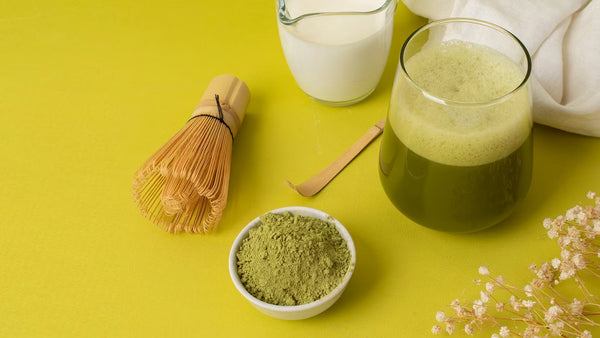Preparing a Smooth and Frothy Cup of Matcha Tea
Among the world's most elegant ceremonies of tea culture, one of them is preparing matcha tea. As an alternative to regular green tea, matcha involves whisking tea ground powder into hot water and whipping it into a foamy, silky cup. It is not brewing a drink—it is an orchestrating meditation, in Japanese tradition, involving sophistication, patience, and calmness. Its foundation is one sole required instrument: the matcha whisk.
What is a Matcha Whisk?
Most visitors ask themselves: what is matcha whisk and why are humans using it? Known in Japanese as a "chasen," a matcha whisk is a particular type of bamboo whisk used to blend matcha powder into water. Its delicate prongs are shaped to break up lumps, introduce air into the liquid, and create a silky layer of froth. The matcha whisk is not just an object; there is something symbolic about it. Each nuance, from the bamboo to the handcrafted finish, is an expression of centuries of artisanship that have been dedicated to refining Japanese tea ceremonies. For tea lovers seeking authenticity, Tea Culture of the World curates premium-grade whisks and blends so that traditional preparation can be experienced right at home.
The Significance of a Frothy Cup of Matcha
For Japanese traditional culture, the froth on the matcha is more than an artistic addition. It signifies purity and balance in the tea ceremony. Frothy and smooth in the cup adds to the overall process of consumption, and the tea becomes light but flavorful. Contrary to the steeped teas where it is flavored, matcha is taken in totality, and hence texture plays a significant role. This is why the whisking is so crucial to the process; it ensures that the tea powder fully dissolves and becomes an evenly, smooth liquid.
Matcha Whisk Use: The Technique H2
The proper matcha whisk use is critical to brewing the perfect cup. Begin by sifting 1–2 teaspoons of matcha powder in a bowl to eliminate clumps. Add a little warm water (not boiling, but approximately 80°C) and begin whisking in a light zigzag pattern such as an "M" or a "W." It is not stirring in a circle, but whisking fast enough to introduce air and create tiny bubbles.
Within 15–20 seconds, the surface begins to froth with a thin layer of minute bubbles indicating matcha has been properly prepared. The ultimate texture is silky, richly colored, and pleasant to consume.
Maintaining Your Matcha Whisk
Since the matcha whisk is a bamboo-made utensil, it should be treated gently in order to continue being functional for a long period of time. Put it up on a whisk stand if possible, so that the prongs do not go out of shape. Cared for properly, a single whisk will use you for hundreds of sessions of tea, continuing the tradition in your own home.
Matcha Tea Culture Worldwide
One of the most distinctive gifts of Japan to global tea culture is matcha. Green teas are ubiquitous everywhere around the globe, but matcha stands out because it not only serves as green tea but also as a powdered form. In the rest of the world, it has become highly sought after by wellness seekers, cafes, and even in modern recipes—smoothies to desserts and lattes.
It is not just the taste which makes it world-admired, but the ritual involved in it. Preparing matcha makes one mindful. Whisking itself becomes meditative, and one can pause and live the moment. This is why matcha transcended boundaries and carved out a place for itself in contemporary lives without compromising its origins.
Every time you whisk your matcha, you're not just creating a beverage—you're perpetuating tradition hundreds of years in the making that has united people in deference, consciousness, and thanksgiving for nature. With thoughtfully crafted collections, Tea Culture of the World ensures this heritage is both preserved and accessible to modern tea lovers.
Frequently Asked Questions
It is impossible for a spoon to produce the same frothy texture that a whisk can make. The bamboo prongs of a matcha whisk spread out clumps and introduce air so that the beverage is creamy and smooth.
To whisk matcha, whisk in a zigzag "M" or "W" pattern rather than in circles. This is friendly to developing the frothy top you're after and prevents powder from accumulating at the bottom.
Wash under warm water the instant when you're done using it, and do not employ soaps that might damage the bamboo. Stand it up on a whisk stand if you have one, so the prongs keep their original shape.
Although you can try to do it using other equipment such as a frothier, the real texture and feeling are from a traditional whisk. Beginners will have the best outcome by commencing with a whisk.
Matcha preparation is rich in mindfulness, patience, and tradition, which are common in most tea cultures. Its popularity all over the world is a testament to the fact that rituals from one nation can have the ability to encourage tea enthusiasts from across the globe.


